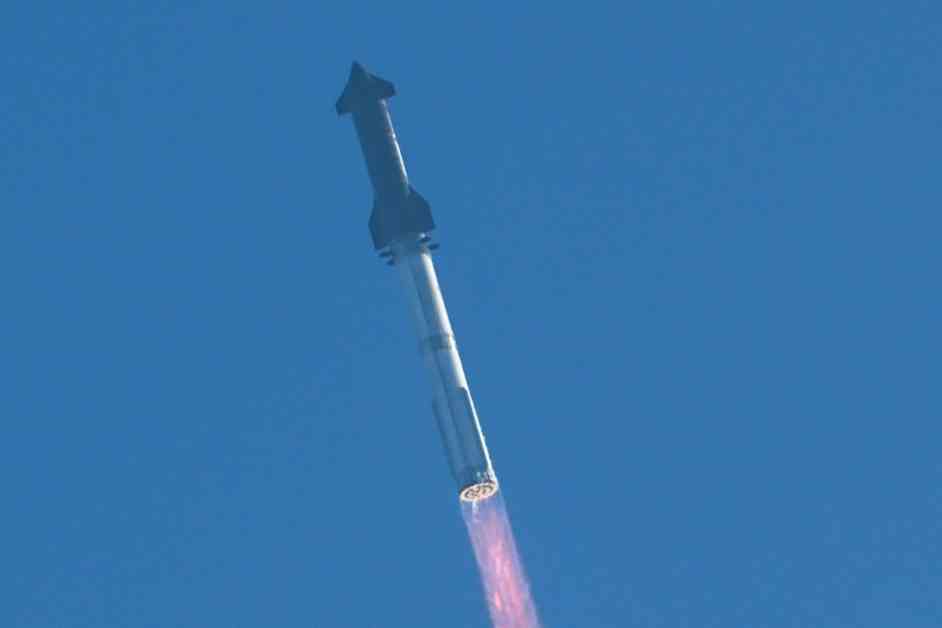SpaceX’s Starship has completed its sixth test flight successfully, marking another milestone for the massive rocket. The launch took place at the company’s Starbase site in South Texas, with the Starship megarocket lifting off without its booster catch attempt due to flight data constraints.
Although the booster, known as Super Heavy, was unable to be caught and landed back at the launch tower as planned, it made a controlled splashdown in the Gulf of Mexico. The mission aimed to test various aspects of the Starship system, including the performance of the upper stage spacecraft known as Ship.
The flight included new milestones such as carrying the first-ever Starship payload, a plush banana, as a zero-gravity indicator. Ship also re-lit one of its engines during the flight to demonstrate its ability to return safely to Earth during orbital missions. The test flight also assessed modifications to Ship’s heat shield and other critical components.
SpaceX is working towards developing Starship for missions to the moon and Mars, with NASA selecting the vehicle to be the first crewed lander for its Artemis program. The company’s founder and CEO, Elon Musk, has ambitious plans for the future of Starship, aiming for increased launch cadence and operational capabilities in the coming years.
The successful test flights are paving the way for more extensive missions, with the goal of sending Starships to Mars as early as 2026. The rapid iteration and progress of SpaceX’s development efforts suggest that human exploration beyond Earth orbit may be closer than anticipated.
With support from key stakeholders and regulatory environments, SpaceX is poised to accelerate its timeline for crewed missions to the moon and Mars. The close relationship between Musk and influential figures like President-elect Donald Trump could further expedite the process of establishing Starship as a reliable and reusable spacecraft for future space exploration endeavors.










